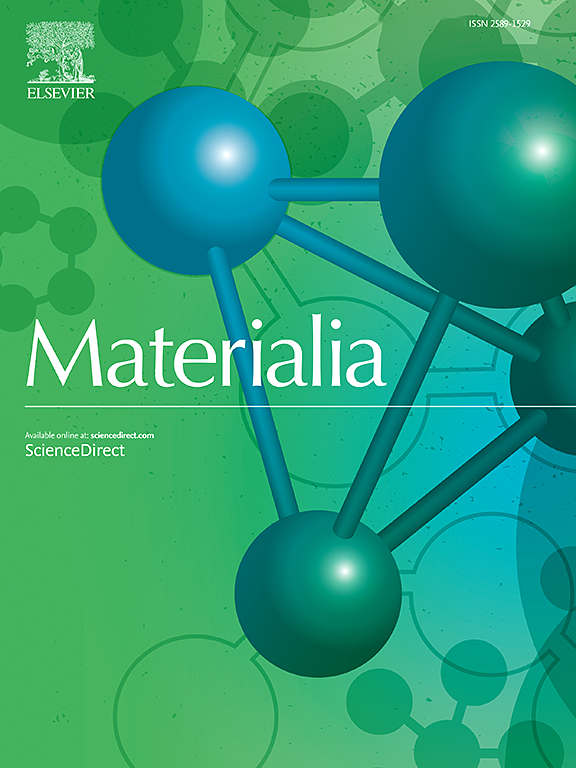Impact of lattice distortion and vacancies on magnetism and magnetocaloric effect in Ho3BxC4-x compounds for hydrogen liquefaction
IF 3
Q2 MATERIALS SCIENCE, MULTIDISCIPLINARY
引用次数: 0
Abstract
Hydrogen is increasingly recognized as a clean and sustainable energy carrier, essential for the transition to a low-carbon economy. Efficient storage and transportation of hydrogen necessitate its liquefaction, which requires extremely low temperatures. Traditional hydrogen liquefaction methods, such as the Claude cycle based on Joule-Thomson expansion, are energy-intensive and complex. This study successfully synthesizes Ho3BxC4-x compounds and systematically investigates their crystal structure, electronic structure, magnetic properties, and magnetocaloric effects (MCEs). Through a combination of theoretical calculations and experimental validation, we explore the impact of precise elemental regulation on the magnetocaloric properties of these compounds. Our findings demonstrate that adjusting the boron and carbon content significantly enhances the MCE and effectively controls the magnetic transition temperature. This improvement is attributed to the synergistic effects of lattice distortion, electronic structure modifications, and lattice vacancies. Additionally, varying the carbon content modifies lattice vacancies, further optimizing the magnetic transition temperature. These results present a novel approach for developing sustainable cooling technologies. Furthermore, the tunable elemental composition allows for targeted adjustments to meet specific cooling requirements, thereby broadening the application scope of these materials.

氢液化Ho3BxC4-x化合物中晶格畸变和空位对磁性和磁热效应的影响
氢越来越被认为是一种清洁和可持续的能源载体,对向低碳经济过渡至关重要。有效的储存和运输需要氢气的液化,这需要极低的温度。传统的氢液化方法,如基于焦耳-汤姆逊膨胀的克劳德循环,是能源密集型和复杂的。本研究成功合成了Ho3BxC4-x化合物,并对其晶体结构、电子结构、磁性能和磁热效应(MCEs)进行了系统研究。通过理论计算和实验验证相结合,我们探索了精确的元素调节对这些化合物的磁热学性质的影响。研究结果表明,调整硼和碳的含量可以显著提高MCE,并有效控制磁转变温度。这种改进归因于晶格畸变、电子结构修饰和晶格空位的协同效应。此外,改变碳含量可以改变晶格空位,进一步优化磁转变温度。这些结果为开发可持续冷却技术提供了一种新的途径。此外,可调的元素组成允许有针对性的调整,以满足特定的冷却要求,从而扩大了这些材料的应用范围。
本文章由计算机程序翻译,如有差异,请以英文原文为准。
求助全文
约1分钟内获得全文
求助全文
来源期刊

Materialia
MATERIALS SCIENCE, MULTIDISCIPLINARY-
CiteScore
6.40
自引率
2.90%
发文量
345
审稿时长
36 days
期刊介绍:
Materialia is a multidisciplinary journal of materials science and engineering that publishes original peer-reviewed research articles. Articles in Materialia advance the understanding of the relationship between processing, structure, property, and function of materials.
Materialia publishes full-length research articles, review articles, and letters (short communications). In addition to receiving direct submissions, Materialia also accepts transfers from Acta Materialia, Inc. partner journals. Materialia offers authors the choice to publish on an open access model (with author fee), or on a subscription model (with no author fee).
 求助内容:
求助内容: 应助结果提醒方式:
应助结果提醒方式:


